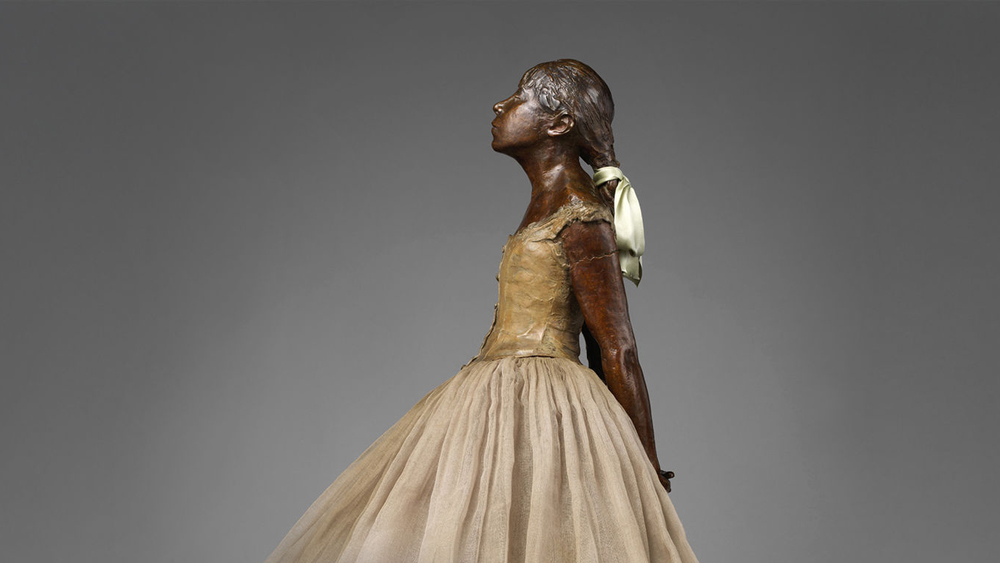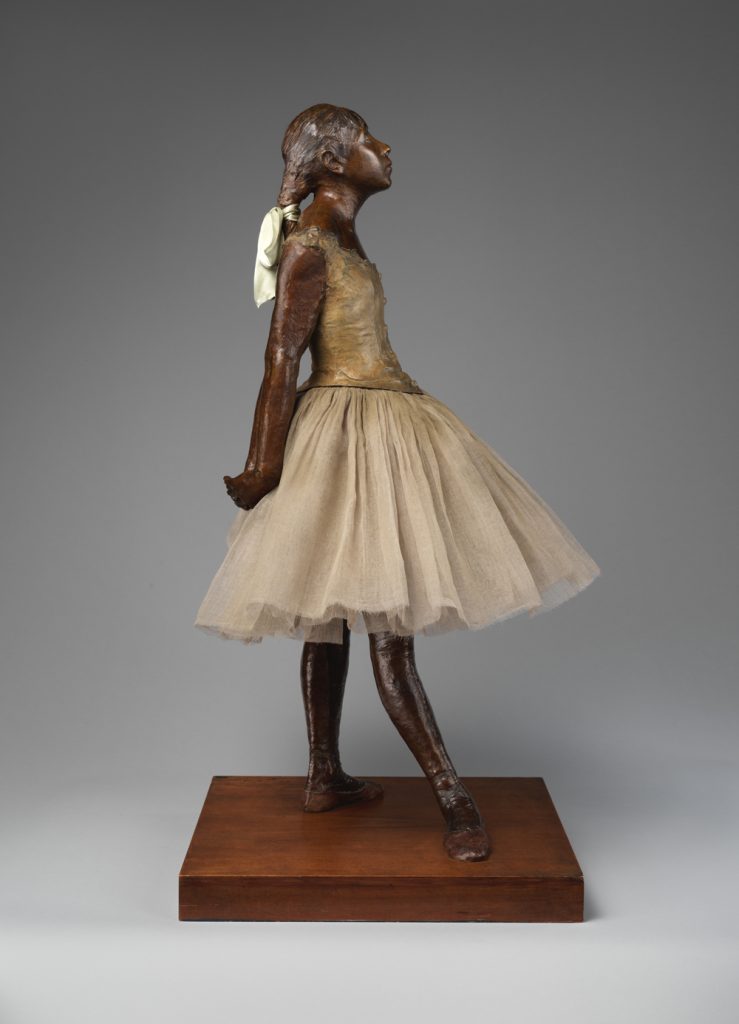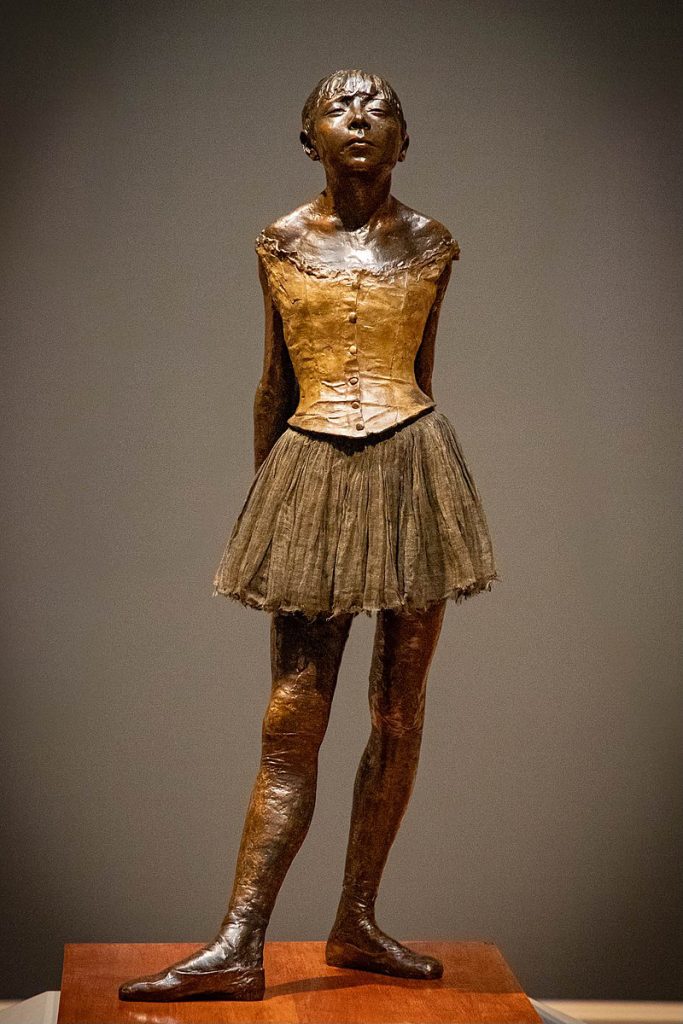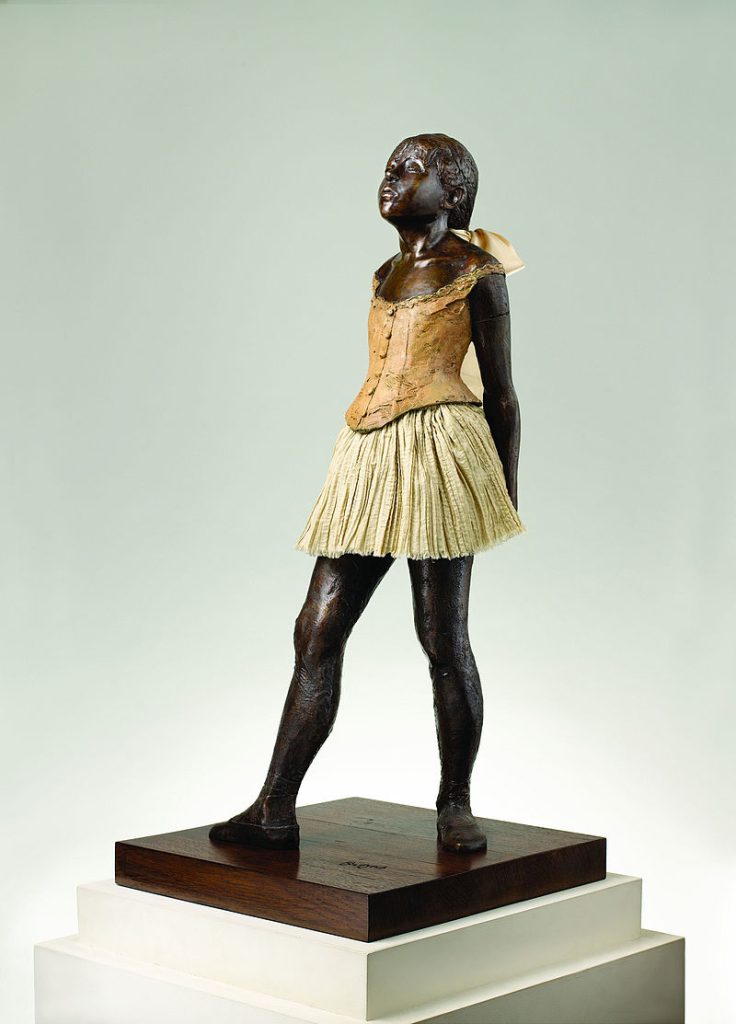Introduction

The Little Dancer of Fourteen Years is one of the masterpieces of the Impressionist master Edgar Degas. Despite being the most famous as a painter, he also ventured into the field of sculpture and created one of the most revolutionary sculptures in his works. This article will provide an in-depth introduction to the origin, historical background, artistic characteristics, and impact on the sculpture industry and the Impressionist movement of ‘The Fourteen Year Old Dancer’.
Origin and Historical Background
Degas and Multidisciplinary Creation
Edgar Degas was an outstanding representative of the Impressionist movement in late 19th century France. Although he is famous for Impressionist painting, his exploration in the field of art covers multiple fields such as painting, sketching, printmaking, and sculpture. Degas is known for his unique observations of light and motion, which are not only reflected in his paintings but also influenced his sculpture creation.
The Rise of Impressionist Movement
The Impressionist movement emerged in the late 19th century, and its representative writers attempted to present more realistic and intuitive impressions by capturing moments, changes in light, and colors. Degas is one of the key figures of Impressionism, and his works emphasize moments in life, especially dance and theater scenes.

The Appearance of Sculpture
Real clothing and props
The uniqueness of ‘The Little Dancer of Fourteen Years’ lies in Degas using authentic materials to decorate the sculpture. The theme of this sculpture is a fourteen year old ballet dancer wearing real ballet performance attire, including a tight corset, fluffy ballet skirt, and ballet shoes. Her hair is also made from real human hair, which enhances the authenticity of the sculpture.
A realistic expression
Degas captured the facial expressions of the little dancer with astonishing skill. Her expression appeared both confident and slightly shy, reflecting the emotional fluctuations of the performers on stage before and after the performance. This emotional expression makes the sculpture more vivid.
Using real objects
Some parts of the sculpture, such as bows on ballet dresses and ribbons tied to hair, are made from real objects. This made sculpture one of the early representatives of “ready-made object art”, a concept that later became very important in modern art.
The impact on sculpture

Breakthroughs in the art world
The Little Dancer of Fourteen Years represents a major breakthrough in the field of sculpture. In that era, sculpture usually emphasized idealized and mythological images, while Degas chose a real young girl as the theme, making the sculpture closer to life and more realistic.
Realism and Impressionism
This sculpture combines elements of realism and impressionism. It embodies the core concepts of the Impressionist movement by capturing instantaneous emotions and real-life character images.
Impact on the audience
When “The Little Dancer of Fourteen Years” first appeared at the 6th Impressionist Exhibition in 1881, it caused a sensation. The audience was shocked by the use of authentic materials and clothing in the sculpture, which went against the traditional concepts of the time and also made the sculpture more attractive and approachable.
Artist’s Legacy

Degas’ Sculpture Heritage
Throughout Degas’ life, he only exhibited this sculpture in exhibitions. However, after his death, 156 other sculptures were discovered in his studio, which were buried for a long time but later discovered and received the recognition they deserved. These sculptures continue to inherit Degas’ artistic heritage and showcase his unique insight into multimedia creation.
Epilogue
The Little Dancer of Fourteen Years is a masterpiece by Edgar Degas, representing an important milestone in the Impressionist movement and modern sculpture. This sculpture allows the audience to feel the connection between art and life through a profound observation of real life and the use of real-life materials. Its innovative spirit and contribution to realism continue to inspire the innovation and development of art.

